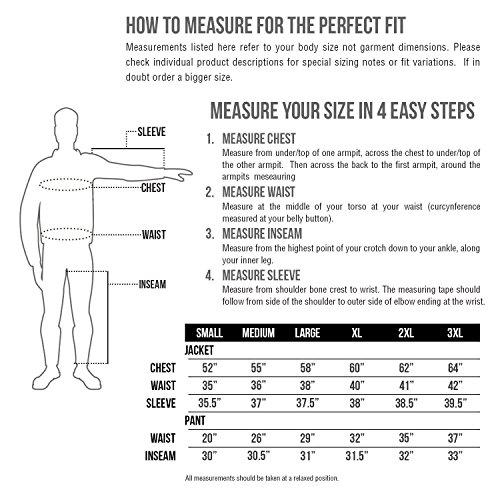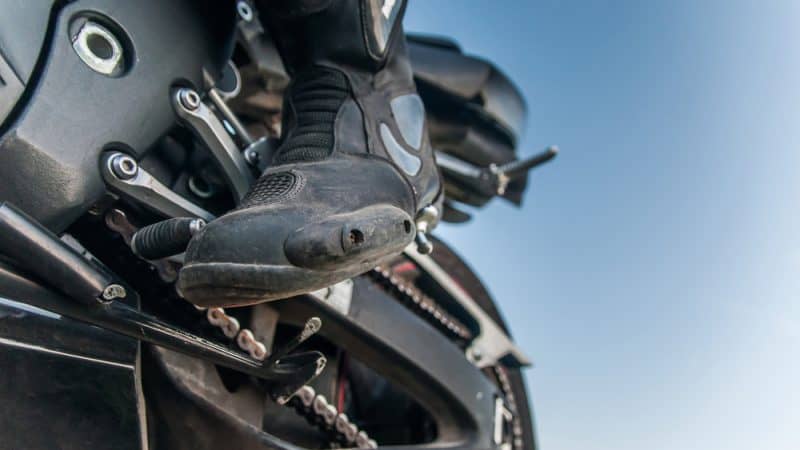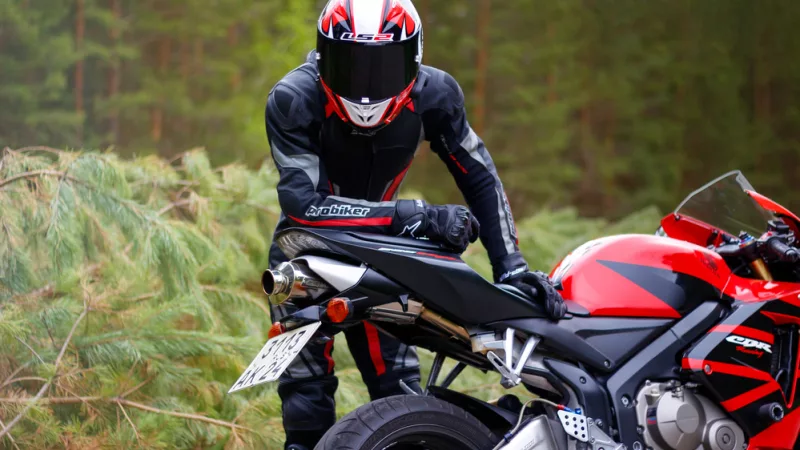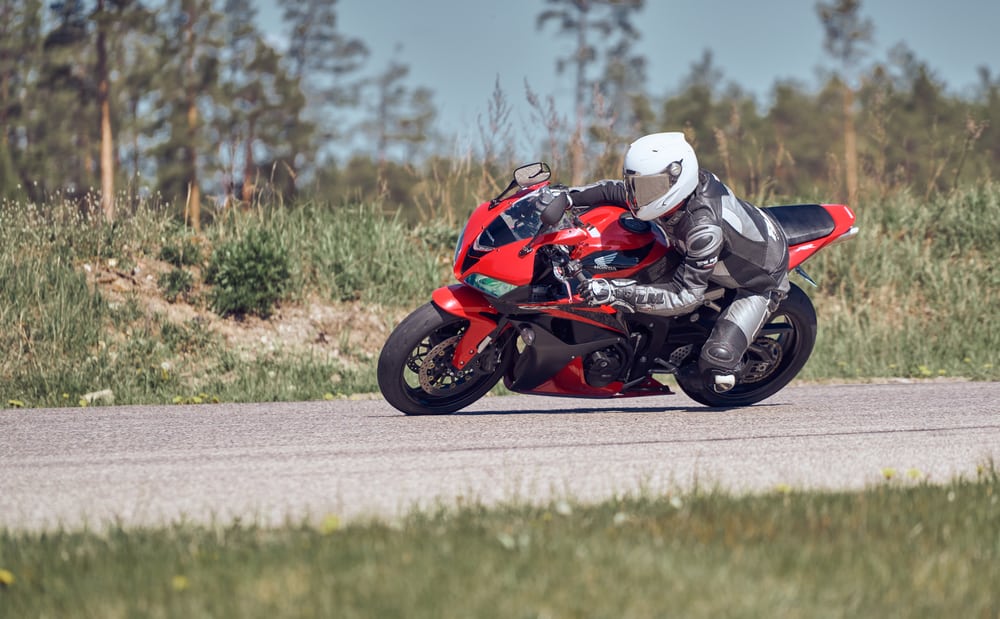Hi Everyone! This is my first motovlog! I’m riding a 2004 Yamaha YZF-R6. Don’t forget to subscribe and comment!!
You Might also like
-
Viking Cycle Motorcycle Rain Gear Review
If you’re a biker, you’ve undoubtedly heard of Viking. They’re a leading name in motorcycle gear, making some of the best coats, packs and much more. Did you know they also make the best motorcycle rain gear?
Riding motorcycle in the rain comes with a host of problems, not all of which have to do with road safety. I you live in an area that runs the gamut of climates and weather, and you like to depend on your bike for transportation, you need to be prepared.
When it comes time to buy your motorcycle rain suit, you want the best motorcycle rain gear you can get, and unsurprisingly, that’s going to come from Viking – who else?
What is Motorcycle Rain Gear?
Rain gear for motorcycle riding consists of one or two components – at least a jacket/top, and often, a pair of easily-removed pants. The material used is water-resistant, often nylon or poly-synthetic in nature, capable of sloughing off the built up water, and helping to fight the cold, damp wind you’ll be plowing into at high speed.
Not all rain gear for motorcycle riding is made equally, and Viking, already known for their excellent jackets, pants and packs, have combined art and material sciences to produce the best rain suit for motorcycle riders that money can buy.
Not only will it keep you warm and dry, but it’s remarkably easy to clean – count on mud and dirty tar-laden water splashing on you if you’re interested in riding motorcycle in rain.
Is it Lame to Wear Rain Gear on a Motorcycle?
You like to be respected by your fellow bikers, and there’s nothing wrong with that. If you’re going to ride, you want to ride in style and comfort. This has led some motorcycle riders to leave rain gear for motorcycle riding out of their repertoire in the past.
However, there is nothing lame or uncool about rain gear – the dirty water flying up off the road, and the rain itself, will ruin a leather jacket or a good pair of pants, and the high wind can result in you catching a cold, or even the flu or pneumonia.
Besides, the best motorcycle rain suit designs are quite stylish, matching any rider’s taste in bike and in the rest of their ensemble.
You don’t want to arrive at your destination soaking wet, as wet clothes is one of the most uncomfortable things one can imagine. On a colder, rainier day, you can become very ill if you allow yourself to get wet like this, and the wind will chew right through you as well.
Safety on a motorcycle isn’t just about riding properly and wearing your helmet. It’s about protecting your whole body from the elements, and that includes rain.
OVERVIEW
Viking Cycle Rain Gear offers you the freedom and comfort of movement for every biker’s needs in heavy rainy weather. The color options are bright for stronger visibility, along with reflective striping on the jacket to make sure you get to and from each destination safe and sound. Soft polyester outer shell with PVC packaging; our jacket has a Full-Length Zipper with a Velcro Strom Flap as well. In addition, we’ve added a head shield on the calf for added comfort and safe riding.
Ride through the rain while keeping yourself warm and dry by using these quality rain suits. While using this Viking Cycle Rain Suit you’ll be able to ride during heavy rain while knowing that your leathers under the rain suit will stay nice and dry. This rain suit has built-in reflective fabric on the pants and jacket to give you better night time visibility, keeping you dry and safe while you ride during bad weather.
What is the Best Motorcycle Rain Gear?
Viking’s rain suit for motorcycle riders is a top of the line, two-piece design. The stylish exterior is made of the latest in hydrophobic materials, sloughing off water, even gritty, muddy water from the road. The adjustable sleeves and collar of the jacket make it a one-size-fits-all solution that anyone with anybody build can wear comfortably and with pride.
The pants fasten to the jacket easily, creating a complete seal against the elements. With Velcro, it can easily be adjusted while providing a snug, closed fit that will never jam, rust or corrode.
The advanced material also breathes, with an advanced two-way thermal lining that can keep heat in against the cold, while also allowing breathing so summer rains don’t cook you in your own sweat and heat.
With an attractive gray/black style, it provides a timeless look that’s anything but lame or unfashionable, matching any bike, and any rider, be they young or old. If you’re interested in riding a motorcycle in rain, this is definitely the gear for you. Now you can enjoy those cross-country rides and be prepared for any weather this beautiful country can throw at you, and know you’ll arrive safe, dry, and feeling just fine.
To learn more about Viking’s other awesome biking gear, or about riding a motorcycle in the rain safely, subscribe to my YouTube channel today. I have some awesome things I want to show you, and this is just a taste!
TECHNOLOGY
Viking Cycle’s Rain Gear Fabric is a 100% 600D Polyester coated by PU (polyurethane). The 600D Polyester coated by PU, is also wind and water resistant so it will provide great protection against cold wind and rain and it will not sag and creates less wrinkle overtime. The fabric is light weight but highly resilient against abrasions to provide more resistance between the body and the road for your protection, and also stands against wear and tear for product durability.
-
Beginner’s Guide To Shifting Gears On A Motorcycle
An underrated aspect of learning how to ride a motorcycle goes beyond turning and popping wheelies. No, it’s something seemingly much more simple than that. Do you shift? Sure, shifting gears should be easy, because it’s a basic function; but shifting gear does have a layer of complexity that beginning cyclists could have problems mastering right away.
Here’s everything you need to know about shifting gears on a motorcycle.Motorcycle Gears Basics
The three basic controls are ones that you might already know—the throttle, the clutch, and the gear selector. You use the throttle to rev the engine, the clutch to engage and disengage the brakes (transmission), and to select gears. For instance, if you pull the left hand clutch towards you, the engine revs without ever moving the bike.
The gear pattern can be clicked through by using the gear selector lever and is moved by your left foot. Most bikes have the following gears, starting with the lowest first:
• First gear
• Neutral
• Second gear
• Third gear
• Fourth gear
• Fifth gear
• Sixth gear (depending on the bike)
As you can see, shifting fears is sequential. Up or down, neutral (N) is always put between 1st and 2nd gear.Technique For Motorcycle Shifting
It’s best to learn the proper technique required to maneuver through shifting gears before learning how to do anything else.
Steps of the proper shifting technique:- Disengage the clutch. Use your left hand to pull it towards you.
- Select the correct gear by using your left food on the shifting lever.
- Slightly rev the engine if shifting up.
- Gradually release the clutch. Don’t pop it.
- Feather the throttle while releasing the clutch to accelerate smoothly.
- Continue revving if you which to switch to another gear in succession. Otherwise, find a nice cruising speed to maintain.
Shifting With Sound and Feel
Have you ever heard wailing motorcycle engines on the road? You’ve probably thought to yourself, “Is that rider even shifting?” That’s you using the basic rule of sound. In basic terms, if an engine starts to scream, you shift to an upper gear. If the engine starts to grumble, then shift the engine lower.
There a many methods to help you do this properly. Beginners should only focus on the simplest method. Afterwards, you can experiment.
Start off by riding in first gear. Try to sense to point when you need to switch to second gear. This means the engine isn’t yet screaming, but you are feeling the natural inclination to gain more speed. The clutch will disengage easily.
Should the engine start to scream, this means you’ve hit the red line, otherwise known as the built-in limiter. The limiter is placed in the engine to ensure the bike doesn’t overextend itself and burn up.
If you shift a gear up too soon, the bike could stall or choke. Restart the bike. Try again. Keep working through the gears until you can hear and feel when it is time to gear up.Shifting Smoothly
You will notice that there’s no mathematical equation to figure out the “when” behind shifting. Every bike has a unique behavior that depends on how you handle it. For instance, if the bike jerks when you release the clutch, you’re being too abrupt. If the bike tends to lurch during shifts, you’re applying too much throttle. If the motorcycle’s speed dips during shifting, you need to rev the engine more between gear changes. Pay attention to the clutch, throttle, and gear selector, because these all interact and are dependent on one another.
Mechanics of Movement
Let’s back-up for a moment. Now that you have this idea in your mind that you need to listen and feel and understand with muscle memory what to do when shifting, it’s time to talk about what is happening inside the bike while you’re doing the actions.
The clutch is the first thing you touch when it’s time to shift gears, unless you have an automatic motorcycle or a quick shift. Once the clutch is engaged, meaning the lever is out and power is send to the rear tie, little springs press on the clutch plate that connect the primary drive to the part that rotates from the pistons going up and down.
When you pull the lever, the plate separates and releases the connection to the motor. In this moment, you can change gears.
That’s when you take your foot and move the gear selector. On the gear selector is a piece called a collar that has “dogs.” This dogs mesh together with the fork in the same way you interlace your fingers. When you move your foot up and down on the selector, the dogs and fork connect to help change the gear. Then, you find the right gear and accelerate.
Keep this in mind while reading the next two sections about upshifting and downshifting.Upshifting
Most of this article has been devoted to upshifting. Upshifting is easier than downshifting, because you are accelerating. This means that if you do any of the steps of shifting a little too quick, there’s less of an impact. Of course, this could result in a sudden jolt of power to the rear wheel, causing the front tire to come off the ground.
(Note: You should only practice stunts in a controlled environment and when you have gained enough experience.)Downshifting
On the opposite end of upshifting is downshifting, which tends to go a little less smoothly. If you release the clutch too quickly while downshifting, the sudden downward change can cause the gear to slow down the rear tire, compressing the front end, and causing a lack of traction in the back end. You need to be able to control the release of the clutch.
Be careful when rounding corners and decreasing your gears for this reason. You don’t want to suddenly lose traction right when you need more grip on the asphalt. That could cause the bike to skid to the side.False Neutral
When downshifting, you could accidentally hit a false neutral. This can happen anywhere there shouldn’t be a neutral, including between 3rd and 4th or 4th and 5th and so on. This could happen if the dogs don’t connect with the fork when selecting gears. There is power loss to the rear wheel.
If you end up in a false neutral, pull on the clutch, and put the bike into a higher gear. You can prevent excessive damage to the bike. Be quick and make sure you move into the correct once you get out of false neutral.
With that, you should be able to master the basics of shifting. Practice the timing of the clutch release and working with the gear selector for a bit. You will soon be able to shift between gears like someone who has been riding for many years.
Liked this article and want more beginner motorcycle tips? Check out my YouTube channel and don’t forget to hit that subscribe button. -
More Than Just a Number: Evaluating Motorcycle Performance Beyond Top Speed
In the world of motorcycles, the allure of top speed is undeniable. Images of sleek machines blurring across racetracks and boasting impressive numbers often dominate the conversation. However, for many riders, true performance goes beyond simply hitting the highest speedometer reading. Just like a good book isn’t judged solely by its length, a motorcycle’s true capabilities extend far beyond a single metric.
Key Takeaways
- Top speed isn’t the only measure of motorcycle performance. Consider factors like acceleration, handling, braking performance, and power-to-weight ratio to find the perfect bike for your needs.
- Different riding styles prioritize different performance aspects: acceleration for city riding, handling for navigation, braking for safety, and power-to-weight ratio for sport riding.
- Choose a motorcycle that aligns with your individual riding style and preferences for the most enjoyable and fulfilling experience.
Comparison Table: Conventional vs. Unconventional Motorcycle Performance Measures
Feature Conventional Unconventional Focus Top Speed Acceleration, Handling, Braking, Power-to-Weight Ratio Relevance Limited More comprehensive picture, caters to various riding styles Examples MPH (km/h) 0-60 mph (0-100 km/h) time, suspension travel, braking distance, horsepower per kilogram This article delves deeper, exploring unconventional measures of motorcycle performance that cater to various riding styles and needs. While top speed has its place, focusing solely on this number can paint an incomplete picture of a motorcycle’s true potential. Here are some key performance factors to consider:
1. Acceleration:
The thrill of the launch, the surge of power as you twist the throttle, is an essential part of the riding experience. Acceleration, measured in seconds from 0 to 60 mph or 0 to 100 km/h, indicates how quickly a motorcycle can gain speed. This metric is particularly important for city riding and overtaking maneuvers, offering confidence and responsiveness in everyday situations.
2. Handling:
The ability of a motorcycle to carve through corners with precision and stability is crucial for a confident and enjoyable ride. Handling encompasses factors like suspension, steering geometry, and tire grip. A well-handling motorcycle feels planted and predictable, allowing riders to navigate curves confidently and explore the twisties with ease.
3. Braking Performance:
The ability to slow down effectively and safely is paramount for any motorcycle. Braking performance is measured by the distance it takes a motorcycle to come to a complete stop from a specific speed. Powerful and responsive brakes inspire confidence, especially on mountain roads or in unexpected situations.
4. Power-to-Weight Ratio:
This metric combines engine power and motorcycle weight. A higher power-to-weight ratio signifies a lighter bike with more power, translating to better acceleration, agility, and overall responsiveness. This factor is especially relevant for sport-oriented riding and track days, where quick maneuvering and responsiveness are crucial.
Finding the Right Balance:
Finding the Right Balance:
The ideal combination of these performance metrics depends on your individual riding style and preferences. Tourers might prioritize comfort and long-distance capabilities, while track riders might seek razor-sharp handling and agile responsiveness.
6 FAQs About Unconventional Motorcycle Performance Measures
1. What’s the difference between horsepower and torque?
Horsepower measures an engine’s ability to generate power, while torque measures its twisting force. Both contribute to a motorcycle’s performance, with a good balance being ideal.
2. How does suspension affect handling?
Suspension plays a crucial role in absorbing bumps and maintaining tire contact with the road, leading to improved stability and control.
3. Are ABS brakes important?
Anti-lock braking systems (ABS) help prevent wheel lockup during hard braking, providing increased control and shorter stopping distances, especially in slippery conditions.
4. What’s the ideal power-to-weight ratio for me?
A higher power-to-weight ratio generally translates to better acceleration and agility. However, consider your riding style and skill level. A lighter, more powerful bike might be harder to handle for beginners.
5. How can I test a motorcycle’s performance before buying?
Many dealerships offer test rides so you can experience the motorcycle’s performance firsthand. Consider different models and riding scenarios to find the best fit.
6. What are some safety considerations when evaluating motorcycle performance?
Always prioritize safety first. Focus on factors like braking performance, handling, and visibility to ensure a safe and enjoyable riding experience.
Facts & Statistics: Motorcycle Usage and Performance Preferences
- 70% of motorcycle owners use their bikes for leisure riding. (https://www.statista.com/study/91633/motorcycles-report/)
- 30% of motorcycle owners commute to work on their bikes. (https://www.statista.com/study/91633/motorcycles-report/)
- Among sportbike owners, 65% prioritize handling and agility, while 42% prioritize acceleration. (https://www.statista.com/study/91633/motorcycles-report/)
By understanding these unconventional measures and evaluating them against your needs, you can make a more informed decision when choosing a motorcycle that perfectly aligns with your riding experience. Remember, the fastest motorcycle on the market isn’t always the “best” for everyone. Ultimately, the perfect motorcycle is the one that delivers the performance characteristics that bring you the most enjoyment and confidence on the road.













